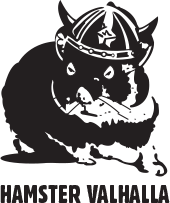Worf is the ultimate samurai.
It doesn’t take much to see that the Klingons in Star Trek are based on the ancient Japanese warriors. Their preoccupation with honor, their lust for battle and deification of the bat’leth as the soul of the warrior—all of these conventions come from the culture of death that permeated Japanese society prior to the Edo era. Like the samurai, a Klingon’s purpose is to die gloriously in battle. The Way of the Warrior is the Way of Death. And if Klingons are samurai, then what is Worf but a ronin? Expelled from his homeland, his family name disavowed, he clung to the only thing he had left—his honor.
The concept of bushido, the warrior’s code, has long been a staple of chanbara cinema, comics and literature. It is one of the defining traits that makes a samurai a samurai. A code of honor which is valued above one’s own life is obviously a dramatic idea, but not one that was unique to Japan. While Western culture has the chivalry of its medieval knights, it seems to belong more to a set of gentlemanly ideals than the stark all-or-nothing of the samurai code. Western society focused on living with honor; Eastern society on dying with honor. The problem is that it’s difficult to say how much of our perception of bushido has been altered by our own modern interpretation and narrative conventions.
During the Warring States period, survival was the name of the game. Your average samurai was probably more focused on not ending up with his head dangling from an enemy’s waist to be presented to his lord. Bushido as a concept did not come about until after the unification of the daimyo under the Tokugawa Shogunate, and it only gained its current reputation as the defining trait of the samurai through the writings of Nitobe Inazo in the 19th century, a Meiji-era gentleman writing from the cozy side of two hundred fifty years of peace.
The irony is that bushido first developed not as a code of honor, but as a support structure for a political system. A samurai’s first and foremost task was not to live an honorable life—but to serve his lord. This is the flaw of the bushido code.
True bushido can have no political motive. It must be a moral choice. True bushido belongs to the failures. To the exiles. To the ronin who walk the road of shame.
True bushido serves all mankind.
That is what Bushido .44 is all about. The concept is pure speculative pulp—what if a modern samurai resurgence conquered America? We saw how Japan changed after the American Occupation, but what if it were the other way around? How would the ideal of bushido change, given our differing cultural points of view? How would we come to define ourselves?
I’ve been working on this project for many years, and I’ll be working on it for many more. Along the way, I’ve hit a lot of difficulties. But like any good samurai, I endure. Inside, you will find a modern samurai tale, an alternate history yarn and a sake-fueled fever dream drenched in a geisha’s first blood. Three talented pencil artists, Christian Duce, Harvey Tolibao and Jules Abrera, lent their talents to these sample pages along with lush coloring by Martin Hernandez Tena.
One day, I will make Bushido .44 a reality. Until then, please enjoy this glimpse of the dream.
Domo arigatou gozaimashita,
Stu

